To maximize your solar oven's efficiency and longevity, implement a thorough care routine. Clean the interior and reflective surfaces regularly, using gentle cleaners and soft cloths. Store your oven in a cool, dry place, and use moisture-absorbing techniques to prevent damage. Maintain reflectors and structural integrity through frequent inspections and prompt repairs. Keep seals and insulation in top condition to prevent heat loss. Calibrate and test performance periodically, adjusting for seasonal changes. Don't forget to inspect cooking containers and protect against UV damage. By following these essential care steps, you'll guarantee your solar oven serves you well for years to come. Discover more ways to optimize your solar cooking experience below.
Regular Cleaning Practices

After each use, wipe down your solar oven's interior with a damp cloth to remove any food residue or grease. This simple step prevents buildup and maintains peak performance.
For stubborn stains, use a mild, eco-friendly dish soap and rinse thoroughly. Dry the interior completely to prevent moisture accumulation.
Clean the reflective surfaces monthly or more frequently if visibly dirty. Use a soft, lint-free cloth and a gentle glass cleaner to maintain their reflective properties.
Avoid abrasive materials that could scratch the surfaces and reduce efficiency.
Don't forget the exterior. Dust and debris can accumulate, affecting the oven's ability to absorb sunlight. Wipe the outer surfaces with a damp cloth, paying special attention to any seals or gaskets.
Inspect and clean the cooking trays, racks, and pots after each use. Wash them with warm, soapy water and dry thoroughly before storing.
This prevents odors and guarantees hygienic cooking conditions for your next meal.
Regularly check for any damage or wear, especially on seals and hinges. Address issues promptly to maintain your solar oven's efficiency and extend its lifespan.
Proper Storage Techniques
The longevity of your solar oven hinges on proper storage. When you're not using your solar cooker, store it in a cool, dry place away from direct sunlight. Moisture can damage the reflective surfaces and encourage mold growth, so guarantee the storage area has low humidity. If possible, keep it indoors or in a shed rather than outdoors.
Before storing, make sure your solar oven is completely clean and dry. Remove any detachable parts and store them separately to prevent scratches or damage. If your oven has a glass door, cover it with a soft cloth to protect it from accidental impacts.
For foldable models, store them in their collapsed position to save space and reduce stress on the hinges. Consider using a dust cover or large plastic bag to protect your solar oven from dust and insects.
If you live in an area with extreme temperature fluctuations, place silica gel packets inside the oven to absorb any moisture that might accumulate. Regularly check on your stored solar oven, especially after long periods of disuse, to guarantee it remains in good condition and address any issues promptly.
Reflector Maintenance and Replacement

For ideal performance, maintaining your solar oven's reflectors is crucial. Regularly inspect them for damage, dust, or debris. Clean the reflectors with a soft, damp cloth and mild soap, avoiding abrasive materials that could scratch the surface. Dry thoroughly to prevent water spots.
If you notice any warping, discoloration, or reduced reflectivity, it's time to contemplate replacement. Choose high-quality, weather-resistant materials designed for solar applications. Measure your current reflectors accurately before ordering replacements.
When installing new reflectors, guarantee proper alignment and secure attachment. Follow the manufacturer's instructions carefully to maintain peak cooking efficiency.
| Maintenance Task | Frequency | Tools Needed |
|---|---|---|
| Inspection | Weekly | Visual check |
| Cleaning | Monthly | Soft cloth, mild soap |
| Realignment | As needed | Screwdriver, level |
| Replacement | Every 2-3 years | New reflectors, tools |
Sealing and Insulation Upkeep
To maintain your solar oven's efficiency, you'll need to regularly check for gaps in the seals.
If you notice any damaged insulation, replace it promptly to prevent heat loss.
Don't forget to clean the sealing surfaces regularly, ensuring a tight closure and ideal performance.
Check for Seal Gaps
Maintaining your solar oven's efficiency hinges on regular checks for seal gaps. These small openings can considerably reduce your oven's performance by allowing heat to escape.
To check for gaps, start by inspecting the edges of the oven door and any access panels. Run your hand along these areas to feel for drafts or temperature differences.
Next, use a flashlight to illuminate potential gaps. Close the oven door and shine the light around its edges from the inside. If you see light escaping, you've found a gap.
For a more thorough test, place a piece of paper between the door and the oven body. If you can pull it out easily when the door is closed, there's likely a seal issue.
Don't forget to check the gaskets and weatherstripping. Look for signs of wear, cracks, or compression. Replace these components if they're no longer flexible or have visible damage.
Pay special attention to corners and joints, as these areas are prone to developing gaps over time.
Replace Damaged Insulation
How often should you inspect your solar oven's insulation?
It's best to check it at least twice a year, ideally before and after the peak usage season. Look for signs of wear, compression, or damage that could compromise its effectiveness.
If you notice any issues, don't delay replacing the damaged insulation. Start by removing the old insulation carefully, making sure you don't damage other components.
Choose a high-quality replacement that's suitable for high temperatures and resistant to moisture. Common options include fiberglass, rock wool, or ceramic fiber insulation.
When installing the new insulation, wear protective gear and follow the manufacturer's guidelines. Make certain of a snug fit without compressing the material too much, as this can reduce its insulating properties.
Pay special attention to corners and edges, where heat loss is more likely to occur.
After installation, seal any gaps or seams with heat-resistant tape or sealant. This will prevent air leaks and maintain peak insulation performance.
Once you've replaced the insulation, you'll likely notice improved heat retention and cooking efficiency in your solar oven.
Clean Sealing Surfaces Regularly
While replacing insulation is important, keeping your solar oven's sealing surfaces clean is equally essential for its performance. Regularly clean the areas where the oven lid meets the base to guarantee a tight seal. Use a soft, damp cloth to wipe away debris, dust, and food particles. For stubborn stains, apply a mild, non-abrasive cleaner.
Pay special attention to the gasket or silicone seal if your oven has one. Gently clean it with warm, soapy water and dry thoroughly. Inspect for signs of wear or damage, replacing it if necessary to maintain ideal insulation.
Here's a quick guide to cleaning different sealing surfaces:
| Surface Type | Cleaning Method | Frequency | Tools Needed |
|---|---|---|---|
| Metal | Damp cloth | Weekly | Microfiber cloth |
| Glass | Glass cleaner | Bi-weekly | Spray bottle, cloth |
| Silicone | Soapy water | Monthly | Soft brush, cloth |
| Rubber | Mild detergent | Monthly | Toothbrush, cloth |
Temperature Monitoring System Care
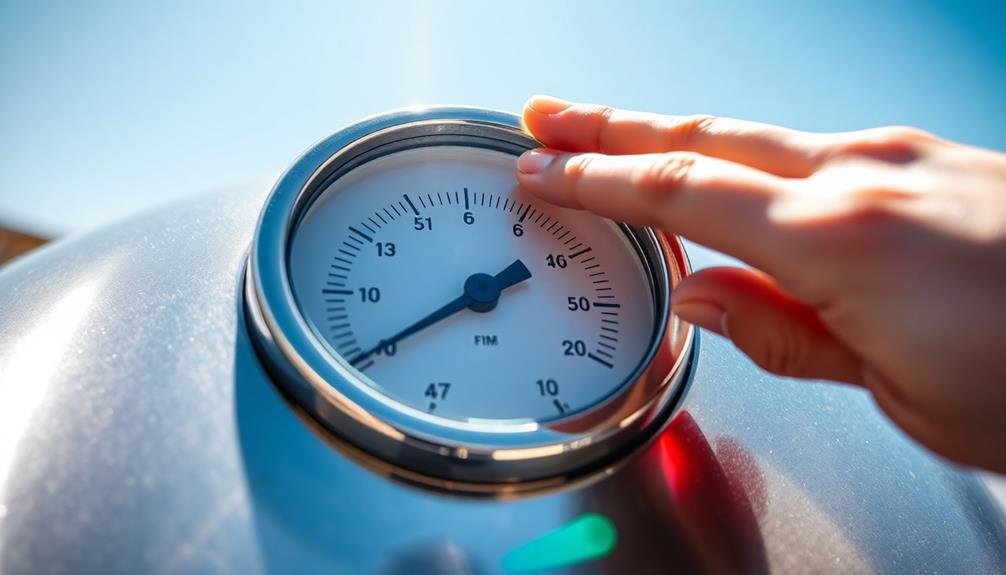
The temperature monitoring system in your solar oven is essential for achieving ideal cooking results. To maintain its accuracy and functionality, you'll need to care for it properly.
Start by regularly inspecting the thermometer or temperature probe for any signs of damage or wear. If you notice any cracks, corrosion, or discoloration, replace the component immediately.
Clean the temperature sensor gently with a soft, damp cloth after each use to remove any food residue or grease. Avoid using harsh chemicals or abrasive materials that could damage the sensor's surface.
If your solar oven has a digital display, keep it protected from moisture and extreme temperatures.
Calibrate your temperature monitoring system periodically to verify accuracy. You can do this by comparing its readings with a reliable external thermometer. If you notice any discrepancies, consult your oven's manual for calibration instructions or contact the manufacturer for assistance.
For solar ovens with more advanced monitoring systems, such as those with built-in data loggers or wireless connectivity, keep the software updated and batteries charged.
Regularly check for firmware updates that may improve performance or add new features.
Cooking Container Inspection
Regular inspection of your cooking containers is essential for maintaining your solar oven's efficiency and food safety. Check your containers for cracks, chips, or signs of wear that could compromise their integrity. Look for discoloration or warping, which may indicate damage from extreme temperatures. Confirm lids fit securely to prevent heat loss during cooking.
Clean your containers thoroughly after each use, removing any food residue or grease that could affect heat absorption. Inspect the surfaces for scratches or abrasions that might harbor bacteria. If you're using metal containers, check for rust or corrosion, especially around seams and edges.
Verify that your containers are compatible with solar cooking temperatures, typically ranging from 250°F to 350°F. Some plastics may release harmful chemicals when exposed to high heat, so opt for glass, ceramic, or food-grade stainless steel. Replace any containers that show signs of deterioration or don't meet safety standards.
Regularly test the heat retention capabilities of your containers by filling them with hot water and monitoring temperature loss over time. This will help you identify any insulation issues that could affect cooking performance.
UV Protection Methods
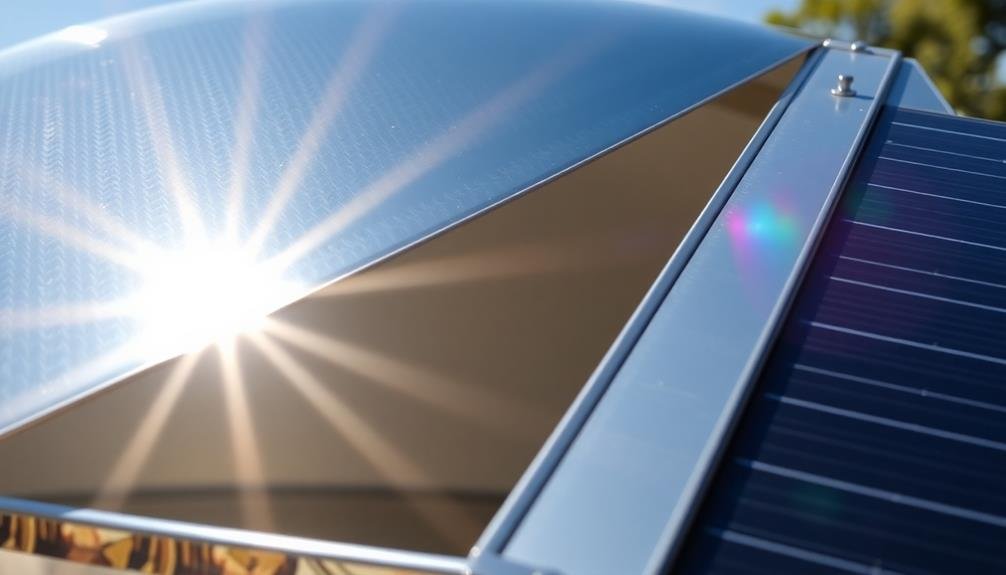
To protect your solar oven from harmful UV rays, you'll want to contemplate using reflective covers and coatings.
These protective layers can considerably reduce UV damage to your oven's materials and components.
When not in use, store your solar oven in a shaded area to further minimize exposure to intense sunlight.
Reflective Covers and Coatings
Protection against harmful UV rays is vital for maintaining your solar oven's efficiency and longevity. Reflective covers and coatings play an important role in this protection. These materials not only shield your oven from UV damage but also enhance its performance by maximizing sunlight reflection.
You'll find various options for reflective covers, including aluminized Mylar sheets and specially designed solar blankets. These can be easily applied to the exterior of your oven when it's not in use.
For a more permanent solution, consider applying reflective coatings to your oven's surfaces. High-quality, UV-resistant paints containing reflective additives like titanium dioxide or zinc oxide are excellent choices.
When selecting a reflective cover or coating, look for products with high solar reflectance values. This guarantees ideal protection and efficiency.
Don't forget to reapply coatings periodically, as their effectiveness can diminish over time. For removable covers, clean them regularly to maintain their reflective properties.
Storing in Shade
While reflective covers and coatings offer excellent UV protection, storing your solar oven in the shade provides an additional layer of defense.
When not in use, keep your solar oven in a cool, shaded area to prevent unnecessary exposure to harsh sunlight. This practice helps maintain the integrity of your oven's materials and prolongs its lifespan.
Choose a storage location that's easily accessible yet protected from the elements. A garage, shed, or covered patio can serve as ideal spots.
If you don't have a dedicated storage space, consider using a weatherproof cover to shield your solar oven from direct sunlight and precipitation.
To create a proper shade storage solution, follow these steps:
- Clear a space in a shaded area, removing any debris or obstacles
- Place a sturdy, flat platform or table to elevate the oven off the ground
- Position the solar oven with its reflective panels closed and secured
- Cover the oven with a breathable, UV-resistant fabric or tarp
Moisture Control Strategies
Inside your solar oven, moisture can be your biggest enemy. It can lead to mold growth, damage components, and reduce overall efficiency. To combat this, implement effective moisture control strategies.
First, always verify your oven is completely dry before storing it. After each use, leave the oven open in a sunny spot for a few hours to evaporate any residual moisture. You can also wipe down the interior with a clean, dry cloth.
Consider using desiccants like silica gel packets inside your oven during storage. These absorb excess moisture and help maintain a dry environment. Replace them regularly to verify continued effectiveness.
If you live in a humid climate, invest in a dehumidifier for your storage area. This will greatly reduce ambient moisture, protecting your oven from potential damage.
Inspect your oven's seals and gaskets regularly. Damaged seals can allow moisture to seep in, so replace them promptly if you notice any wear or tear.
Lastly, avoid storing food or liquids inside the oven when not in use. Even small amounts of residual moisture from these items can lead to problems over time.
Structural Integrity Checks

Establish a regular inspection routine to guarantee your solar oven's structural integrity remains sound.
Check for loose screws, cracks in the reflective surfaces, or damage to the insulation during each inspection.
You'll want to address and repair common issues promptly to maintain your oven's efficiency and extend its lifespan.
Regular Inspection Routine
Your solar oven's structural integrity is essential for its performance and longevity. To maintain its efficiency, you'll need to establish a regular inspection routine. Set aside time each month to thoroughly examine your solar oven, checking for any signs of wear, damage, or potential issues.
During your inspection, focus on these key areas:
- Reflective surfaces: Look for scratches, dents, or discoloration that could reduce solar energy capture.
- Seals and gaskets: Verify they're intact and free from cracks to prevent heat loss.
- Glass components: Check for chips, cracks, or cloudiness that might affect light transmission.
- Hinges and latches: Test their functionality and lubricate if necessary.
Pay close attention to the oven's frame, looking for any warping, rust, or loose connections. If you spot any issues, address them promptly to prevent further damage.
Don't forget to clean your solar oven after each use, as accumulated dirt and debris can impact its performance.
Repair Common Issues
Cracks and dents in your solar oven's structure can greatly impact its performance. To repair these issues, start by carefully inspecting the entire oven for any visible damage.
For small cracks, apply a high-temperature silicone sealant along the affected area. Verify you clean the surface thoroughly before application and allow the sealant to cure completely.
For larger cracks or dents, you may need to reinforce the area with a patch. Cut a piece of heat-resistant material slightly larger than the damaged area. Apply high-temperature adhesive to secure the patch, then seal the edges with silicone.
If your oven's reflective surface is damaged, replace it with new reflective material, carefully adhering it to the oven's interior.
Check the oven's hinges and latches for any signs of wear or misalignment. Tighten loose screws and lubricate moving parts with food-grade lubricant.
If the gasket around the oven door is worn or damaged, replace it to maintain proper insulation.
Performance Testing and Calibration
Performance testing and calibration are essential steps in maintaining your solar oven's efficiency. Regularly assess your oven's performance to guarantee it's operating at peak capacity.
Start by conducting a baseline test on a clear, sunny day. Place a thermometer inside the oven and monitor the temperature rise over time. Compare these results to the manufacturer's specifications or your previous tests.
To calibrate your solar oven, you'll need to adjust various components based on your test results. Focus on:
- Reflector alignment: Confirm all reflective surfaces are angled correctly to maximize sunlight concentration.
- Insulation integrity: Check for any gaps or worn areas in the insulation that may be causing heat loss.
- Sealing effectiveness: Verify that the oven door closes tightly and doesn't allow heat to escape.
- Cooking vessel positioning: Experiment with different placements to find the best spot for even heating.
If you notice a significant decrease in performance, investigate potential issues such as clouding of the glass cover, warping of reflectors, or degradation of the absorber plate.
Don't hesitate to consult the manufacturer's guidelines or seek professional help for complex calibration tasks. Regular testing and calibration will help maintain your solar oven's efficiency and extend its lifespan.
Seasonal Adjustments and Optimization
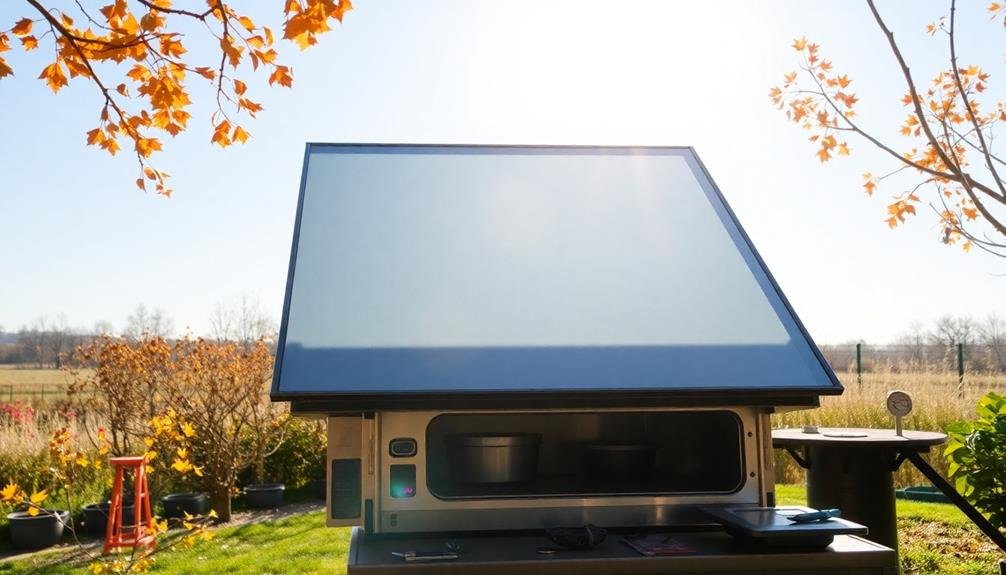
As the Earth's position relative to the sun changes throughout the year, you'll need to make adjustments to your solar oven to maintain peak performance.
In summer, when the sun is higher in the sky, angle your oven more steeply to capture maximum sunlight. Conversely, in winter, position it at a shallower angle to compensate for the sun's lower path.
During spring and fall, you'll need to adjust the oven's position more frequently due to the rapidly changing sun angle. Consider using a sun-tracking device or regularly realigning your oven throughout the day for ideal results.
To maximize efficiency in cooler seasons, use additional reflectors or insulation to concentrate and retain heat.
Enhance cooking times by starting earlier on shorter winter days and taking advantage of longer summer daylight hours.
In humid conditions, ventilate your oven more to prevent condensation. For windy days, verify your oven is securely anchored and use windbreaks if necessary.
Frequently Asked Questions
Can I Use My Solar Oven During Cloudy Weather?
You can use your solar oven on cloudy days, but it'll be less efficient. Expect longer cooking times and lower temperatures. For best results, choose partially cloudy days or use a reflector to concentrate available sunlight.
How Long Does It Typically Take to Cook a Meal?
Cooking time in your solar oven varies depending on the dish and weather conditions. You'll typically need 1-3 hours for most meals. On sunny days, you'll cook faster. Always monitor your food's progress and adjust as needed.
Are Solar Ovens Safe to Use Around Children?
Yes, solar ovens are generally safe around children. You'll want to supervise them, though, as the oven can get hot. Teach kids about sun safety and proper handling. Always use oven mitts when removing food.
Can I Use Metal Cookware in a Solar Oven?
Yes, you can use metal cookware in a solar oven. It's actually a great choice as metal conducts heat well. Dark-colored pots and pans are especially effective, absorbing more sunlight and cooking food faster than lighter-colored alternatives.
What's the Maximum Temperature a Solar Oven Can Reach?
You'll find that most solar ovens can reach temperatures between 250°F to 350°F. However, some high-end models can hit up to 400°F or even higher. The maximum temperature depends on factors like design and sunlight intensity.
In Summary
You've learned essential solar oven care practices to keep your device running efficiently for years. By cleaning regularly, storing properly, maintaining reflectors, and checking seals, you'll prevent common issues. Don't forget to monitor temperature, control moisture, and check structural integrity. Regular performance tests and calibrations guarantee peak function. Make seasonal adjustments to maximize efficiency. With these habits, you'll enjoy reliable, eco-friendly cooking while extending your solar oven's lifespan.
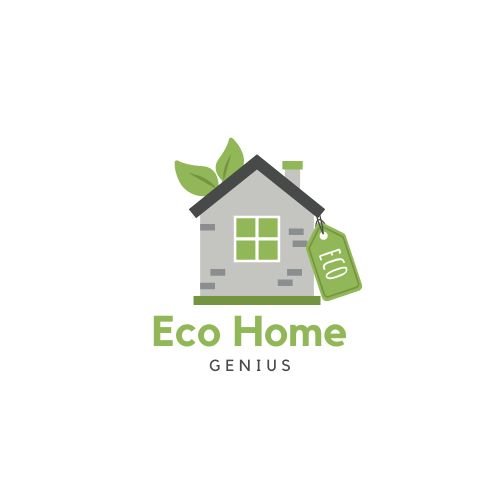

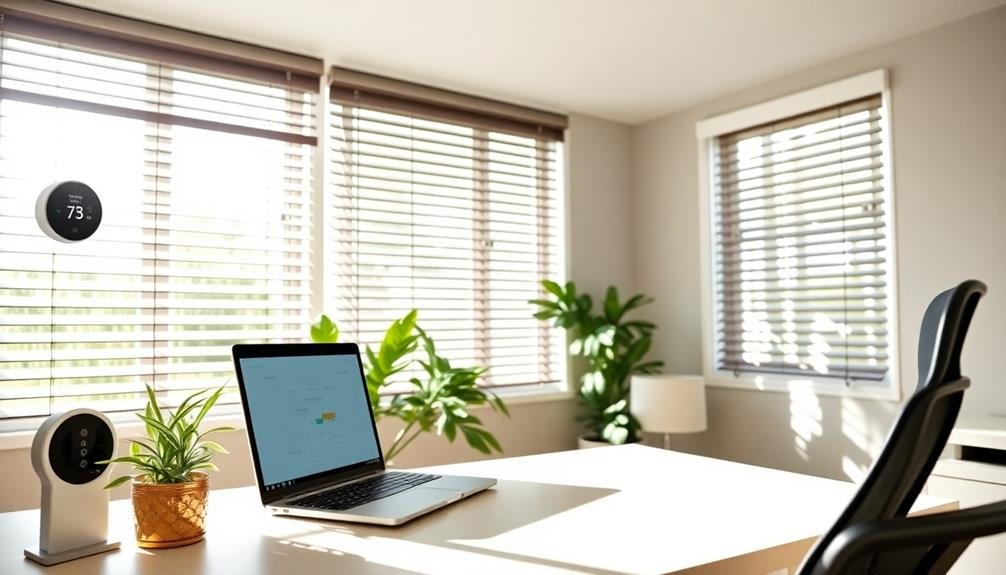
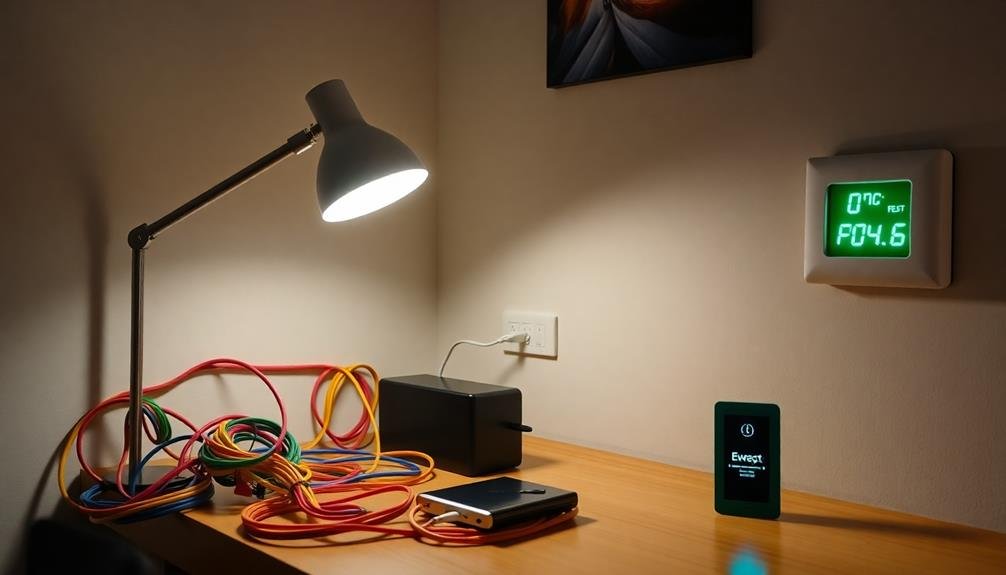
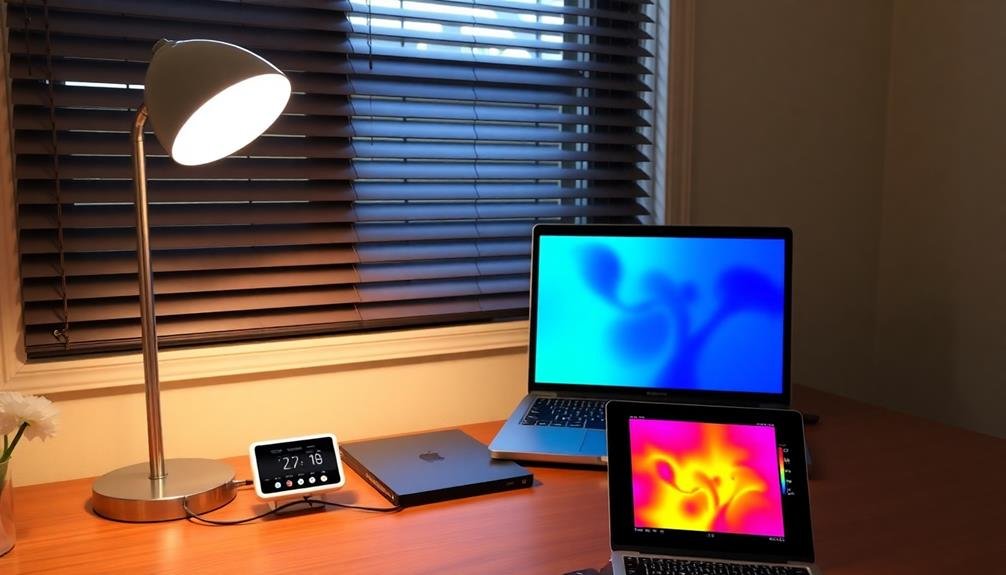
Leave a Reply